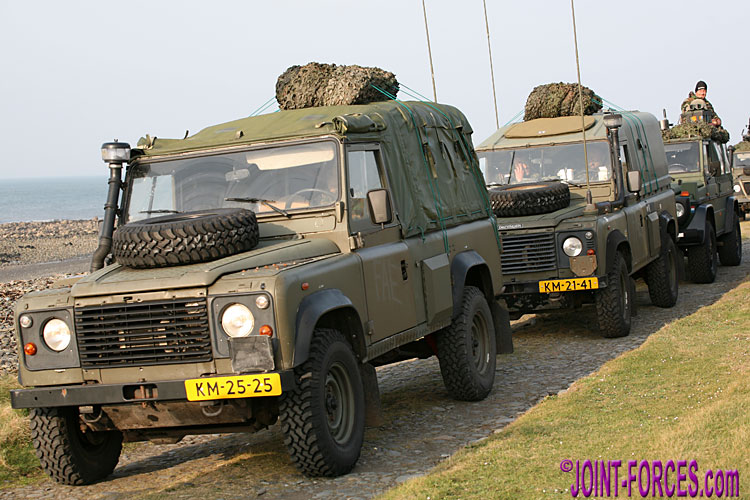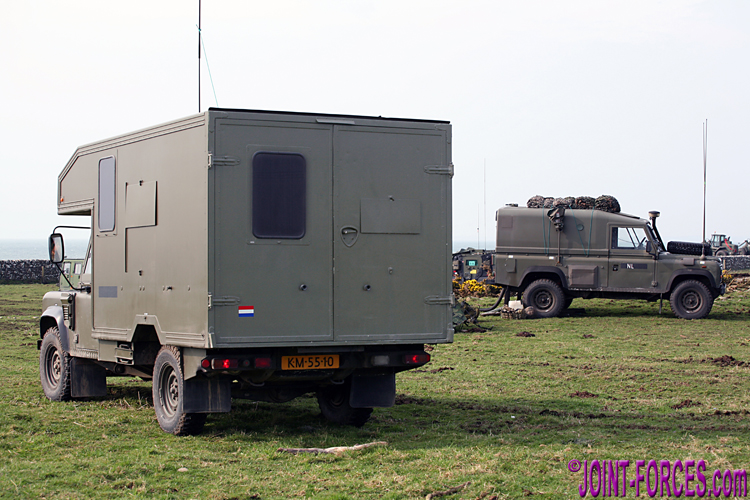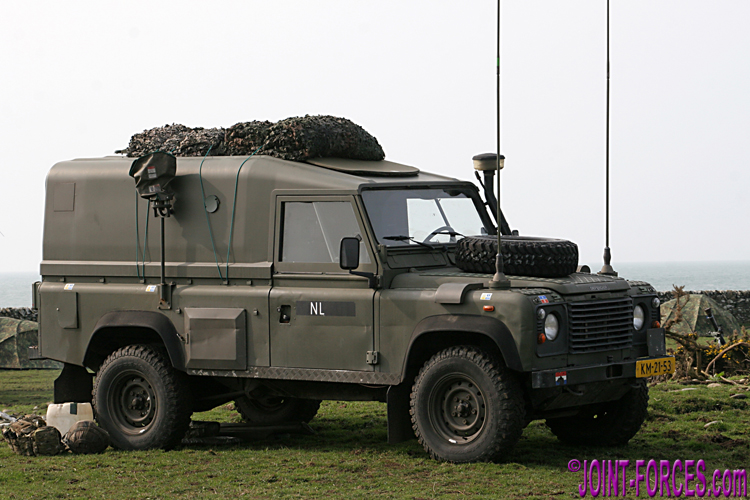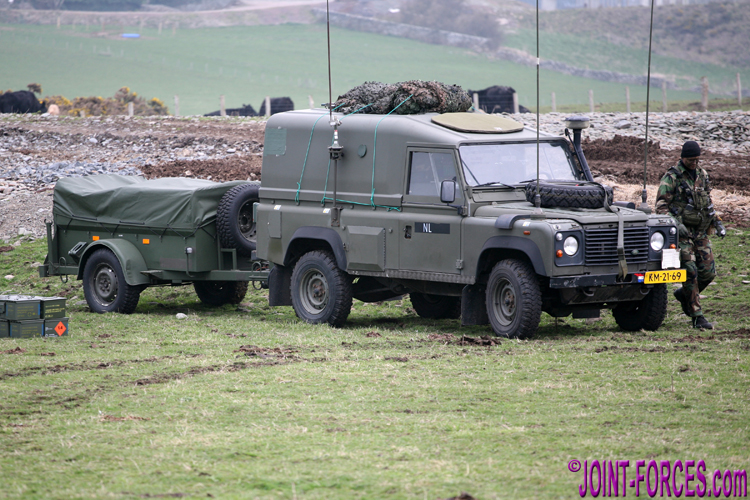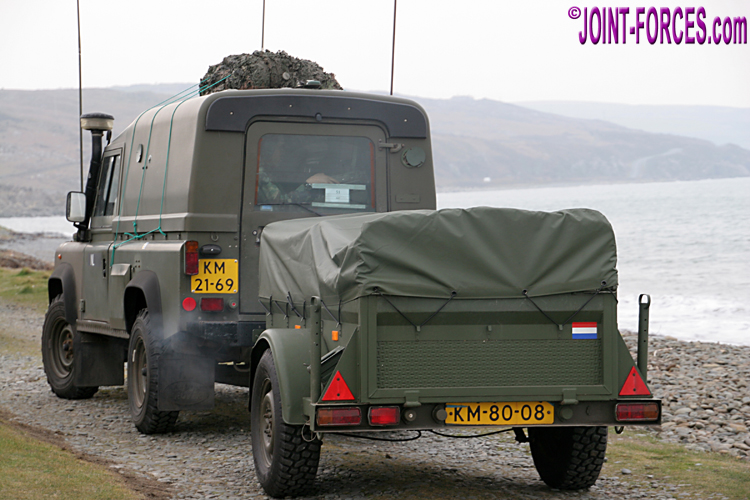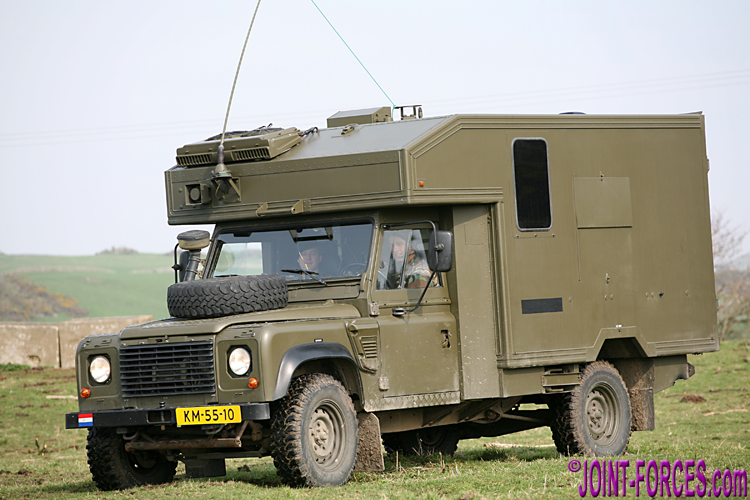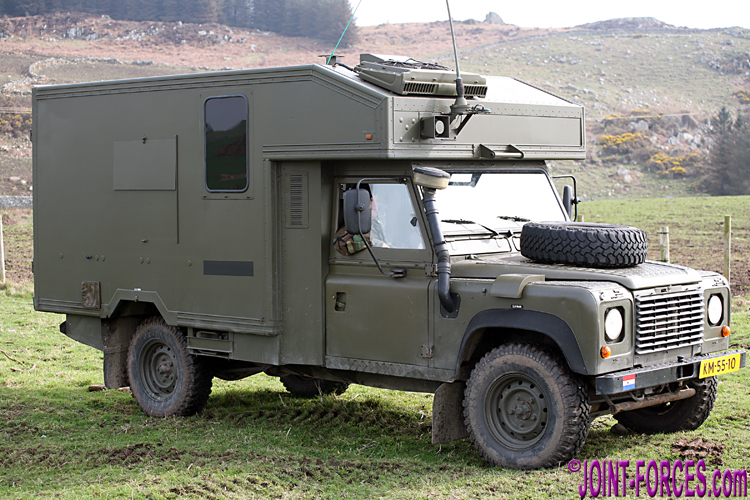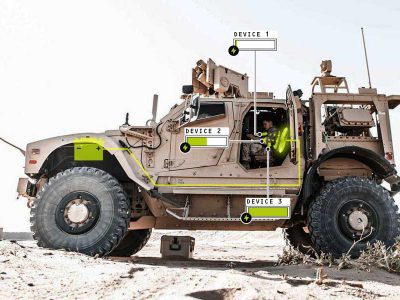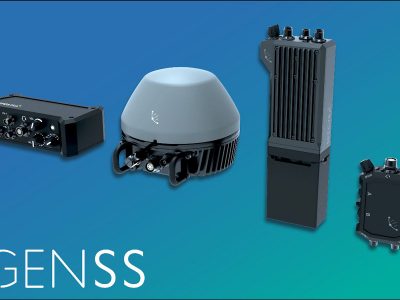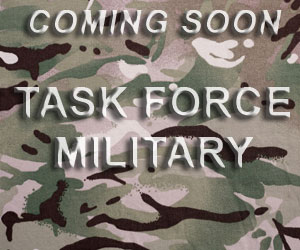In my last Military Land Rover feature I looked at the mid-1980s Dutch Marines One-Ten fleet and in this feature I am focussing on their successors, writes Bob Morrison.
~
Prior to the introduction of their waterproofed soft top One-Ten fleet of Land Rovers the Royal Netherlands Marine Corps (RNLMC) or Korps Mariniers, like the Dutch Army, used heavily modified 88″ Lightweight and Series III 109″ Land Rovers. When the Army abandoned Solihull’s products in the 90s in favour of the Mercedes-Benz badged version of the Steyr-Daimler-Puch Geländewagen, or G-wagen, that portion of the Marine Corps committed to NATO’s joint UK/NL Landing Force stayed loyal to the green oval badge and subsequently, when their One-Tens had over-extended their intended 12-year frontline lifespan they traded them in for the Defender HS / XD, or Wolf, version for commonality with their Royal Marines brothers.
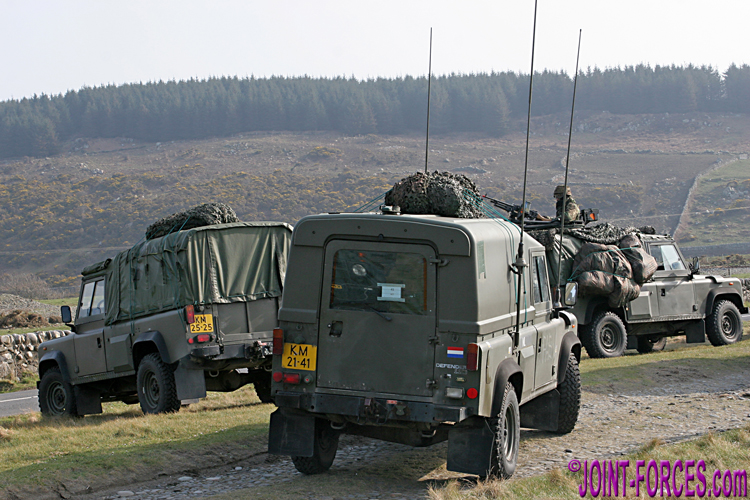
The Dutch Royal Marines are only one year younger than Britain’s Royal Marines and celebrated their 350th birthday four years ago. For the first few years the two were on opposite sides during wartime, and indeed the ‘Cloggies’ were the last foreign troops to invade the English mainland when, during the Raid on the Medway in 1667, they captured the town of Sheerness during the Second Anglo-Dutch War; but over the last 300+ years they have been firm allies and Dutch Marines even played a major part in Britain’s capture, and subsequent defence of, Gibraltar during the War of the Spanish Succession.
Five years ago I headed up to Luce Bay in south-west Scotland when forewarned that the Dutch amphibious landing ship HNLMS Johan de Witt, sister to HNLMS Rotterdam, would be the LPD (Landing Platform Dock) component delivering a major element of the UK/NL Landing Force participating in the Non-combatant Evacuation Operation or NEO phase of the multinational Exercise JOINT WARRIOR 14-1. As I knew this vessel was normally configured to carry a Dutch Commando battlegroup who used a fleet of Land Rovers, in addition to tracked BvS10 Viking armoured personnel carriers, I had all fingers and toes crossed that I might at long last get the chance to photograph Dutch 110 Wolves.
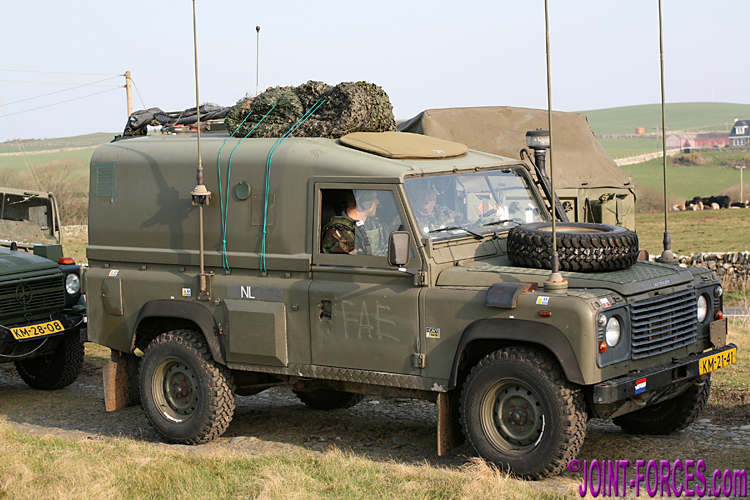
On the Thursday afternoon before commencement of the initial amphibious landing phase of the long-planned JOINT WARRIOR 14-1, the slumbering News Office at MoD Whitehall awoke and announced that media would be invited to cover the (subsequently cancelled) Distinguished Visitors Day linked in with the NEO in just five days time. After receiving confirmation of the location for the NEO late on the Friday afternoon the race was on as past experience told me the Marines would go in at least a day before and it was likely that the landing would commence overnight Sunday/Monday. I realised there was a good chance of catching Dutch Wolves on the beachhead on the Monday morning and as the Dutch MvD had announced that the RNLMC was likely to soon receive Volkswagen Amarok pick-up trucks to replace their by then fifteen year old Defenders it was imperative that I caught them on camera.
When I arrived at the landing beach on the Monday morning, after a five hundred mile overnight drive, even my bleary eyes were able to spot from some distance that the Wolves on the beachhead were Dutch, not British, as they were sporting yellow civilian style number plates front and rear. Additionally, the soft top Land Rovers sporting machine gun mounts were of the Dutch WMIK style, which is very different from the British WMIK design, but these will need to wait for MLR Pt.25 while I focus here on the hard top and ambulance variants.
Back in the early 1990s the original plan had been that UK MoD would introduce its forthcoming Series III Land Rover replacements (the Defender 90 & 110 ‘Wolf’ and Defender 130 ‘Pulse’ ambulance models were eventually chosen) over a five year period but, as the trials & procurement period had dragged out for several years and many vehicles were already well past their sell-by date, it was decided to truncate production time to around 18 months and bring the whole fleet online as fast as possible. Land Rover were happy with this from a production line efficiency standpoint, even though the Treasury was still intending to pay for them over five years and not 18 months, but one downside was that the special components needed for the tagged-on Dutch Marines batch had to be set aside for about three years rather than the vehicles running down the line at Solihull straight after their British cousins; I have subsequently learned that when the time came some old hands who had moved away from the Defender production line had to be called back to ensure the Dutch build ran smoothly.
Above: Two shots of hard top KM-21-69 in different locations – the large trailer towed behind was typical for Dutch Marines and note fabric roof escape hatch for deep wading [© BM]
Visually, other than the obvious left hand drive variation, there is very little to differentiate between a British or Dutch Marines hard top Wolf 110 as both are of the specialist Winterised Waterproofed (Winter Water or WW) sub-version produced by Solihull. However if you look closely you will spot that the RNLMC vehicles have rectangular rear light clusters like earlier Dutch military Land Rovers. Unlike pre-Wolf Dutch vehicles, however, the front lighting arrangement is identical to British military Land Rovers. Another minor difference is the type of base for the antenna mounts and the cowl of the Dutch raised air intake is of a different pattern. The bodywork is identical across both types, though the Dutch have reinforced bonnet, wing tops and under-door sills with chequer plate.
Above: Dutch Marines D130 Pulse ambulances were similar to their British equivalents but had a bonnet mounted spare wheel and an air-con pack over the cab [© BM]
There is also little difference externally between British and Dutch Defender 130 Pulse ambulances, other than rear lighting and air intakes plus additional chequer plate, but the Dutch front light arrangement differs in their being no sidelight and the indicators are set lower. The Dutch ambulance also has a compact wedge-shaped air-conditioning pack over the passenger side of the cab. Like Royal Marines Land Rover ambulances, the Dutch Pulse is waterproofed for deep wading and amphibious operations.
¤ In MLR Pt.25 I plan to look at the Dutch Marines WMIKs which also participated on JOINT WARRIOR 14-1.
[images © Bob Morrison ]


